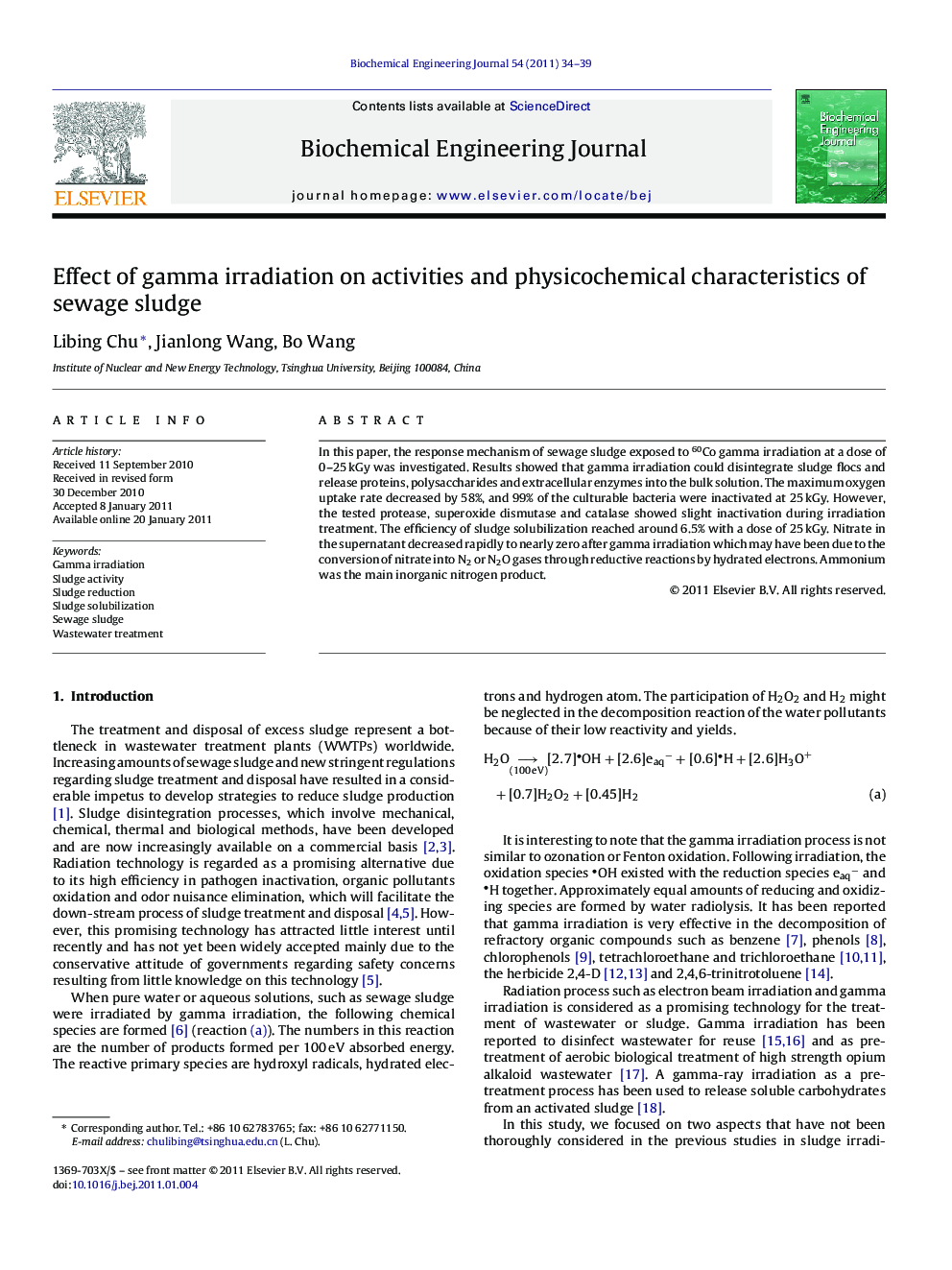| Article ID | Journal | Published Year | Pages | File Type |
|---|---|---|---|---|
| 3829 | Biochemical Engineering Journal | 2011 | 6 Pages |
In this paper, the response mechanism of sewage sludge exposed to 60Co gamma irradiation at a dose of 0–25 kGy was investigated. Results showed that gamma irradiation could disintegrate sludge flocs and release proteins, polysaccharides and extracellular enzymes into the bulk solution. The maximum oxygen uptake rate decreased by 58%, and 99% of the culturable bacteria were inactivated at 25 kGy. However, the tested protease, superoxide dismutase and catalase showed slight inactivation during irradiation treatment. The efficiency of sludge solubilization reached around 6.5% with a dose of 25 kGy. Nitrate in the supernatant decreased rapidly to nearly zero after gamma irradiation which may have been due to the conversion of nitrate into N2 or N2O gases through reductive reactions by hydrated electrons. Ammonium was the main inorganic nitrogen product.
Research highlights► Gamma irradiation could disintegrate sludge flocs and release proteins, polysaccharides and extracellular enzymes into the bulk solution. ► The maximum oxygen uptake rate decreased by 58%, and 99% of the culturable bacteria were inactivated at a dose of 25 kGy. ► The tested protease, superoxide dismutase and catalase showed slight inactivation during irradiation treatment. ► Following gamma irradiation, nitrate in the supernatant decreased rapidly to nearly zero. Ammonium was the major inorganic nitrogen product.
